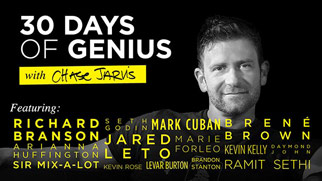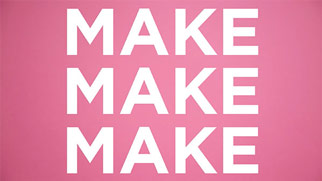Although he’s most well-known for his role in helping launch and edit Wired Magazine, Kevin Kelly is also an accomplished New York Times bestselling author and contributor to The Wall Street Journal. His career has been spent delving into emerging topics in the world of tech, which most recently includes Artificial Intelligence (AI) and its impact on humanity. We sat down for this podcast to tap into Kevin’s broad expertise on the subject matter and get his thoughts on what new generative AI tools mean for the future of creative professions.
Getting Up to Speed With Generative AI
Anyone who’s been watching the news or scrolling through social media over the past six months will tell you that AI’s popularity is on the rise. It really hit the mainstream in late 2022, when San Francisco based tech company Open AI released its viral ChatGPT. This bot was the first of its kind, using an AI system called Generative Pre-trained Transformer 3 (GPT-3) to generate nearly human-like written responses to queries.
Fast forward to spring 2023 and countless people use the web tool and other generative programs like it to create everything from long-form essays to art, music, and even computer code.
Generative AI is a type of artificial intelligence which can generate new content based on given inputs, using deep learning, natural language processing (NLP) and other statistical methods. Generative AI programs learn by analyzing how humans interact with each other’s content, such as conversations, music and other forms of media. They then use this data to create their own output, usually in the form of written text, images and sound.
Beyond writing and visual design, AI is increasingly transforming how we interact with audio and video content. For anyone who’s struggled to transcribe interviews, summarize webinars, or convert long recordings into usable text, the Clipto AI Transcription tool offers a powerful solution. This smart platform uses advanced natural language processing to automatically transcribe spoken content with impressive accuracy, reducing the manual effort required to document conversations or create searchable content libraries. Whether you’re a journalist, content creator, educator, or business owner, using AI to handle transcription allows you to focus on storytelling, insight, and delivery.
By streamlining the process from audio to written word, tools like Clipto not only save time but open up new ways to repurpose and distribute content across multiple platforms. In today’s fast-paced digital environment, where content must be both quick and high-quality, AI transcription is becoming as essential as spell check.
Generative AI is different from other types of AI in that it focuses on generating new content rather than simply responding to user input. This makes it an incredibly powerful tool for businesses and individuals alike, as it can potentially provide them with the ability to create a wide variety of content, from marketing messages to creative works.
The only caveat with this technology is that it’s not completely foolproof – at least not yet.
This ability to generate content has profound implications for creative industries, especially in fields like print-on-demand (POD), where originality and visual appeal are crucial. For entrepreneurs and designers working in POD, creativity isn’t just a bonus—it’s the foundation of their success. Every t-shirt design, mug graphic, or notebook cover must resonate with a specific audience, tell a compelling story, or reflect a cultural trend.
Generative AI, by analyzing massive datasets of consumer behavior, social media trends, and design styles, helps creators explore new ideas they might not have considered. In platforms like Podly, where users rely heavily on tools that support idea generation and product planning, this intersection of AI and creativity becomes even more evident. Podly’s functionality is tailored to help sellers identify what’s trending, spot design opportunities, and avoid trademark issues—core steps in the creative process of building a POD catalog. One of the most valuable features is its Merch Research capability, which guides users through evaluating top-selling products, keywords, and niches.
This allows creators to make data-informed decisions while still applying their unique style and voice. By combining human imagination with machine-driven insights, POD sellers can move beyond guesswork, expanding their creative horizons and producing content that not only stands out but also sells.
As AI continues to revolutionize content creation, its potential for transforming the way businesses and individuals produce digital media is limitless. One of the exciting developments in this space is the ability to create faceless video content. With tools powered by generative AI, users can now produce engaging videos without ever stepping in front of a camera. These platforms allow creators to craft professional-quality videos using avatars, voiceovers, and customizable visuals, making it easier than ever for people who may not be comfortable on camera or who are looking to streamline their content creation process.
This approach to video production opens up new possibilities for anyone looking to engage their audience, from small business owners to content creators, providing them with a powerful tool to tell their stories without the need for traditional video production setups. As generative AI continues to evolve, the world of digital media will become even more dynamic and accessible to creators of all backgrounds.
Highly Intelligent or Highly Eloquent?
While programs like ChatGPT can craft responses to questions that read well, the facts stated within them aren’t always true.
Many people see language models as knowledgeable beings, but they’re really just algorithms trained on lots of data. When users ask them a question, they spit out whatever’s most likely to be the correct answer based on what they’ve done before.
Kevin highlights this as the biggest limitation to full-scale generative AI adoption, saying that any and all outputs created by the technology still need to be scanned to ensure accuracy. He equates their current value to that of an office intern – someone you can ask for a first draft of something from before perfecting on your own. It isn’t a hands-off relationship, but rather one that requires cooperation between humans and machines. When executed well, this can yield end products that are better than either side could create alone.
Embrace Technology, It’s Here to Stay
Clickbait news article titles like ‘AI Will Replace You’ are reasonably off-putting. Anyone who’s seen the movie ‘Terminator’, or its many subsequent films, knows how it could end.
The prospect is especially concerning for creators like photographers and artists, who, for the first time ever, are competing with computers that can generate original images with minimal input. Open AI’s DALL-E is just one example; since launching in 2021, the tool has quickly gained popularity and become a go-to resource for unique images on-demand. Some criticize its widespread use, while others applaud it as a step forward in productivity. There’s been an ongoing debate on whether to ban AI-generated creations altogether so as to protect the interests of human artists.
Kevin’s advice? Embrace this new technology, because it’s here to stay. He considers the introduction of AI tools into the mainstream similar to other revolutionary innovations of the past like Photoshop. Once ground-breaking, these now widely-adopted pieces of software have become an integral part of the photography business.
Artificial Intelligence can become another tool we use to enhance creative work, he says, stating that generative models are more likely to change jobs rather than nullify them altogether.
It’s just going to become another tool in the creative toolbox, potentially changing the process behind artistry and creative expression, but not replacing it. And there will always be both options – work that is 100% human made and work that incorporates both human and AI insights. People will simply have to come together and decide how we want to recognize these different types of creations from one another.
Kevin and I also discuss the beauty of human imperfection and how embracing it may be the best way to go. Just like how AI models get better over time, we as people learn by making mistakes. The more we make, the better we become.
This philosophy is a tenet of Kevin’s new book and can be applied to any area of life, including creative pursuits, where the goal is not necessarily perfection but rather growth and progress. It’s really descriptive of the current relationship we’re in with advancing technology – trial, error, seeing what works, and what doesn’t. But it’s also how the world’s best creations have come to be. So why fear the future? Let’s embrace it instead.
Enjoy!
FOLLOW KEVIN:
twitter | instagram | website



















